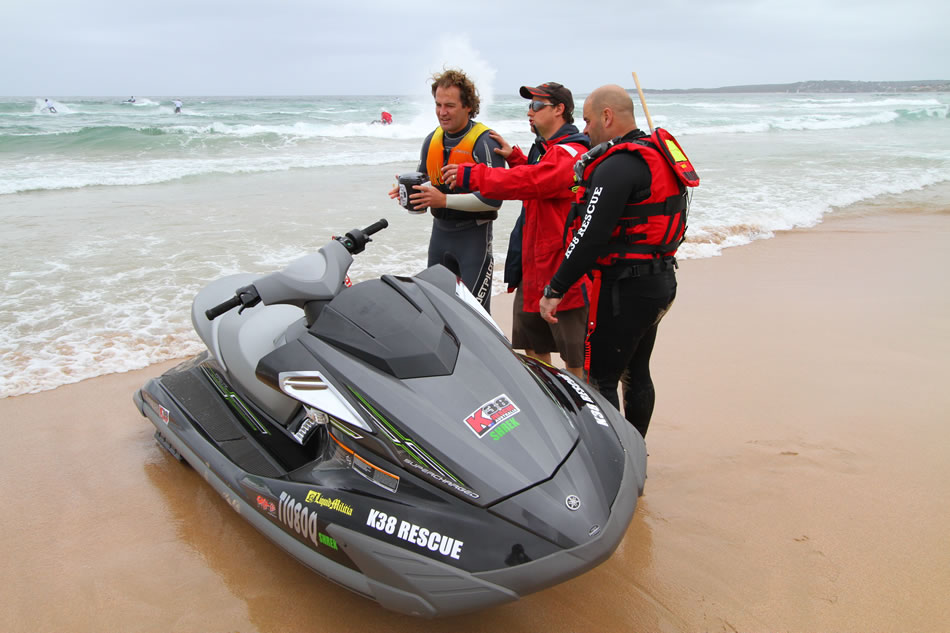High pressure water jets and personal injuries on the rise
Lawsuits are beginning in Texas over injuries suffered by high-pressure water jets from personal watercraft. The water forces into bodily orifices causing injuries to vaginas, anuses, and rectums. Some have died from the injuries.
The injuries are caused when a person falls off the back of one of the craft and comes into contact with the blast of high-pressure water created by the devices’ jet thrust propulsion system, according to the Mazzola Law Firm’s website.
“When a rider lands in the path of the high-pressure water jet thrust, the thrust is powerful enough to force water into the rider’s orifices which can result in severe mutilating injuries to the rider’s vagina, rectum, perineum or anus,” Beaumont, Texas, attorney Brian Mazzola wrote. “Oftentimes, individuals sustaining such injuries require emergency medical intervention including the surgical implantation of a colostomy bag.”
The National Center for Biotechnology Information reports on one such case where a 28-year-old woman sustained an anorectal rupture after falling from a jet ski. Her ruptured anus was sutured and a “double-loop colostomy” was created. The injury occurred when she fell from a jet ski while at a high speed. “During a fall from a jet ski at high speeds, the water behaves as a solid object that penetrates the body,” the report states.
The Lawsuit Information Center reports a 21-year-old woman from Georgia received horrific injuries to her vaginal and anal cavities after she was “tragically gutted by water shooting from the back of a jet ski.” The woman fell off the back of a jet ski when her friend who was driving rapidly accelerated and she was not holding on. She fell off the back and directly into the blast of the high-pressure jet stream of water. The injuries to her vaginal and anal cavities led her to nearly twenty surgeries and other medical procedures. It is likely she will be forced to wear a colostomy bag and self-catheterize for the rest of her life.
Mazzola has filed multiple lawsuits against personal watercraft manufacturers including Kawasaki Motors Corp. USA, and Bombardier Recreational Products (makers of the See Doo watercraft). The attorney has argued that warnings and design issues of these watercraft are inadequate to prevent these types of injuries. He wrote:
The Bombardier warning regarding orifice-injury hazards and the need to wear protective clothing is an industry-wide warning provided by PWC manufacturers beginning in 2001. The warning, developed by Applied Safety and Ergonomics Inc., was tested for comprehension and found to be adequately understood by focus-group participants. The warning, however, provides an ambiguous statement that being “near the jet thrust nozzle” can cause severe internal injuries but fails to clearly emphasize the fact that falling off to the rear of the PWC is especially dangerous for a person, especially females, riding as a passenger because the strong stream of water that propels the vehicle can cause severe and permanent injuries due to forceful injection of water into the vagina and anus.
Other arguments made include the need for a rear seat design to help keep the rear passenger from falling backwards directly into the blast of water. He said, “[U]sing only warnings as the remedy for the risk of orifice injuries caused by falling to the rear of a water jet-propelled personal watercraft is inappropriate and renders the vehicle unreasonably dangerous. The appropriate remedy would involve design accommodations that would decrease the risk of a passenger falling off the rear of the personal watercraft in addition to sufficiently prominent and conspicuous warnings regarding the risk of orifice injury.”
Protective clothing can be worn to help prevent the water blast from readily being able to access the human orifices. Mazzola makes the point that such clothing is often not readily available for casual passengers who spontaneously take rides and who are most at risk to fall from the watercraft.
Other specialty equipment is available to help in the prevention of falling from the device. One manufacture, KlipGrips.com, offers devices such as life vests with handles on the back for the passenger to hold. They also make detachable handles that can clip onto any existing life jacket.
Mazzola says he is attempting to raise the public’s awareness of this watercraft safety issue.

